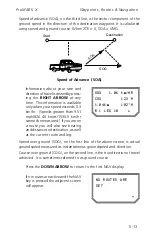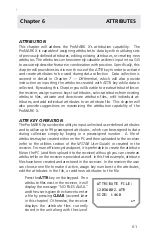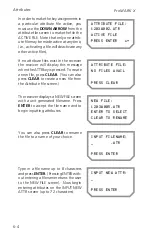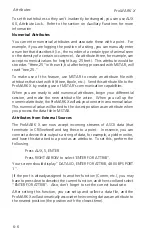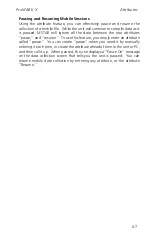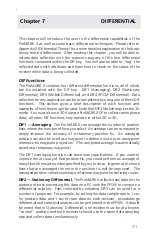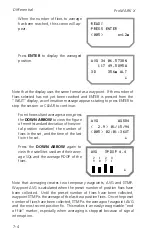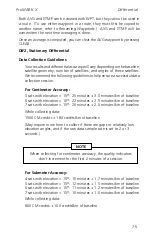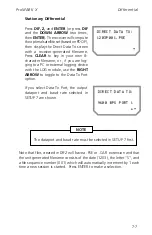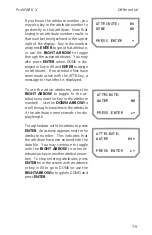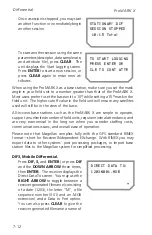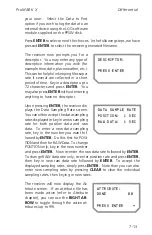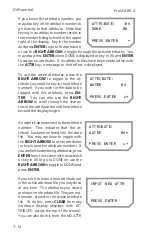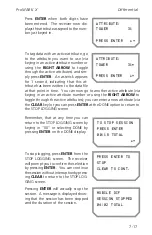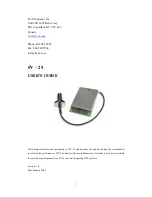
Differential
ProMARK X
7-2
Data collection for submeter post-processing uses the DIF2 feature and a
ProMARK X CP. The ProMARK X does not output all of the data required to
obtain submeter results.
DIF3 — Mobile Differential.
The ProMARK X is capable of collecting data
in a mobile mode for the purpose of computing a differential correction that
is applied to each position in the mobile data stream. This is performed by
the PPSW on a PC and requires one receiver to be at a known “control” point
while the other receiver is moving. The ProMARK X allows the user to select
a specific satellite set or have the unit automatically select the best satellites
available. (When utilizing a base station with all-in-view capability at the
control point, use the unit-selected set.) The ProMARK X mobile differential
utility can be used as locational input into a GIS for network type applications.
The resulting differentially processed output files (refer to PPSW user guide)
can be converted to a variety of formats with the PPSW to be directly input
into a GIS or plotting system. With this DIF function, you could create a map
of a street network, for example, based on the positions computed. This is
done by placing an all-in-view or parallel-tracking receiver at a known control
point.
DIF4 — RTCM.
The ProMARK X can receive broadcast corrections in the
RTCM-104 format through its dataport. This allows the receiver to apply a
differential correction to the computed position fixes before it is displayed on
the receiver's screen. This technique requires an external device to receive
and demodulate the corrections, then relay them through a physical connec-
tion to the ProMARK X. The receiving device may be a differential beacon
receiver (DBR) or a radio modem that receives corrections from a PC or base
station. The DBR requires that you be within range of a broadcasting
differential radio beacon (in the United States, beacons are operated by the
U.S. Coast Guard). A number of services are now broadcasting corrections
for use by radio modems; they currently cover most major U.S. cities.
DIF Functions Operations
Now that some preliminaries have been addressed it is appropriate to discuss
the actual receiver interactions required to perform the DIF functions.
DIF1, Averaging
Press
DIF, 1,
and
ENTER
(or press
DIF
and the
DOWN ARROW
once, then
ENTER
). The receiver displays the num-
ber to average screen. Key in the num-
ber of fixes you wish to average, up to
1499. (The
DOWN ARROW
moves you
to the next DIF function, DIF2.) Press
ENTER
.
SET AVERAGING
ENTER NUMBER
TO AVERAGE
~
Summary of Contents for GPS PROMARK X
Page 4: ......
Page 10: ...vi...
Page 14: ...Introduction ProMARK X 1 4...
Page 92: ...Attributes ProMARK X 6 8...
Page 188: ......




